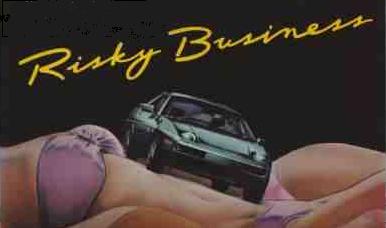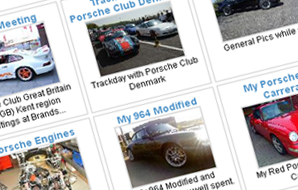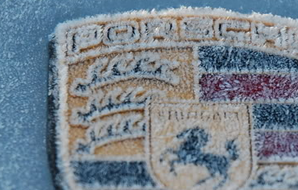Porsche Folio "Articles & Guides"
How to Change the Oil in your Porsche 911

Change the engine oil in your Porsche is probably the most important item on the maintenance agenda to keep your Porsche's engine in tip top condition. It's a simple procedure and something that almost all enthusiasts should be able to do themselves. Once you know what your doing it should take less than an hour to complete. Porsche recommend these days that you should change your engine oil every 15,000 miles or so, but personally speaking we would recommend changing the oil once every 5,000 miles. If you only get your treasured Porsche out of the garage during the summer months and maybe do less than 5,000, it's still a good idea to change the engine oil in these circumstances once a year. Compared to the price of a Porsche engine rebuild, changing the engine oil frequently is a small price to pay for insurance so to speak.
First things first. Make sure you have everything you need to complete the oil change. Make sure you have the correct size sockets for the oil tank drain plug and the sump plate drain plug. This is a good time to change the oil filter, so have the correct filter at the ready. Obviously make sure you have the correct engine oil in the correct quantity for your Porsche. Consult your user manual for the correct quantity. You also need to make sure you have a container large enough to collect the oil as it drains from the oil tank It's messy if you discover half way trough the oil drain that the container isn't large enough.
The next step is to go for a drive and et the engine up to operating temperature. This is important for a number of reasons. First, getting the oil hot will increase it's fluidity and ensure you drain every last drop. Secondly, these variants of the 911 have a front oil cooler which is fed via a thermostatically controlled valve. If you drain the oil with the engine cold, the oil in the cooler and feed lines will stay in the engine and not drain away. Thirdly, with the oil heated and circulated any debris will be caught in the oil suspension and will be drained from the engine along with the oil.
With the car on a level surface, the engine switched off, locate the oil tank. Except for the 1972 variant of the 911, all other 911's in this range will have the oil tank located on the right hand side of the engine bay, tucked away inside the rear wheel arch. The drain plug is located at the bottom of the tank. Please a suitably sized container under the oil tank drain plug and undo and remove the drain plug. The oil will flow freely and quickly. Remember the oil will be hot so b careful not to get burned.
While the tank is draining, now is a good time to replace the oil filter. Simply unscrew the filter by and, or with a chain type filter remover as necessary. Remember the filter is full of oil so avoid spilling it into your engine bay. Next replace the oil filter with a new one. To ensure a good drip free fit, first wipe the oil filter sealing ring with some clean engine oil and they screw into potion. The filter doesn't need to be over tightened. A snug fit should do it.
Once all the oil has finished draining from the oil tank, it's time to drain the remaining oil which will be sitting at the bottom of the engine. There won't be a great deal of oil left in the engine case as the Porsche 911 engines in this series operate a dry sump system. To extract the remaining oil, simply place a container under the engine directly under the sump nut. Starting in late 1983, Porsche moved the location of this drain plug from the bottom of the engine to the side of the case.
Clean both the sump plug and oil tank plug. If they look damaged then replace them. If the threads look worn or damaged or if the hex heads look rounded then replace while their out. Getting them off later can be difficult. Finally replace the plugs and torque them home to 42 N-m.
Wit the new oil filter I place and the two oil plugs torqued at the correct settings, it's time to fill the oil system back up with new fresh oil. First comes the question of which oil should be used. This isn't really the subject of this guide and there are a few good articles on Channel P101tv that discuss engine oil. There is a general debate within the Porsche community for the use of mineral oil versus synthetic oil for the older 911 engines. Some owners have reported oil leaks from a previously dry engine when they have switched from mineral to synthetic. If you have an older engine which hasn't had the seals replaced recently, then it might be better to stick with the Porsche recommended mineral oils.
Next remove the oil tank filler cap and remove the dip stick. Using a funnel fill the oil system up, but not completely. Remember your Porsche's engine would have cooled down by now and the thermostatically controlled valve would have closed meaning that the oil cooler and pipes will not have any oil in them. Next start the engine and get it up to operating temperature. As a check, reach under the front right hand wing and touch the oil pipes that lead to the cooler. If they aren't warm then the oil isn't flowing. Once it's warm then you can put the remainder of the oil in, check the levels of the dip stick at regular intervals as you go. Remember to keep the engine running during this last stage to keep the thermostat open.
As a tip, there is only about a litre of oil between the bottom and top markings on the dip stick. Also, while you should check your oil filler gauge on the dashboard, it's the dipstick's reading that you should rely upon.
Get Involved in the dicussion
We think it's better to talk and would love to hear your thoughts on this article topic. Simply scroll down to read what other Channel P101tv members are saying about this article. Why not add your say. Your comments belong here! You can scroll to the end of the page or Click here to add your comments now.There's Plenty of Articles & Guides
Our Porsche Articles and Guides archives are constantly growing. Take a look through the archives from the Articles menu or click on a preview from the carousel below.
Feel Free to Join in!
If you would like to join in, we would welcome your ideas for an artcle. If there's subject that you'd like to write about then get in touch and let us know. If the topic fits the reader's corner then we'd be pleased to publish it. You will of course receive full credit for the article as well as a link back your Channel P101tv Profile.Have we missed something or feel something should be added?
If there's something missing that you feel needs to be included or if something doesn't seem quite right, then please let us know. If you'd like to write an article for inclusion here then please get in touch. Just click on "Contact us" at the bottom of the page.
We hope you enjoy the Reader's Corner of the Porsche Folio!




































































Saw a car SOS programme on TV recently. Showed what the imside of an engine looked like which hadnt had a regular oil changes. Just a thick sludge of solidified oil and metal shavings. An engine wont last long in those circumstances. So its a cheap oil change or a few thousand pounds for a new engine. The choice is easy